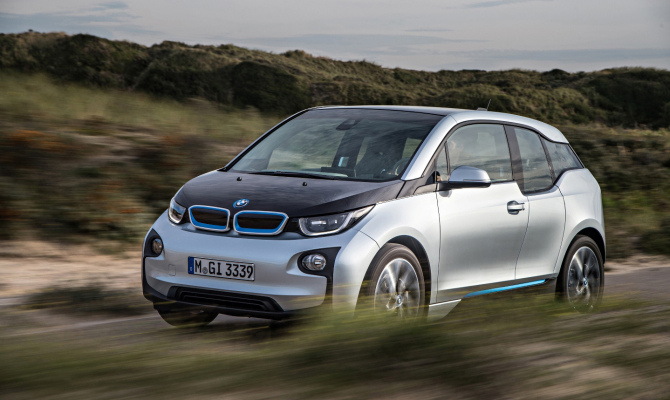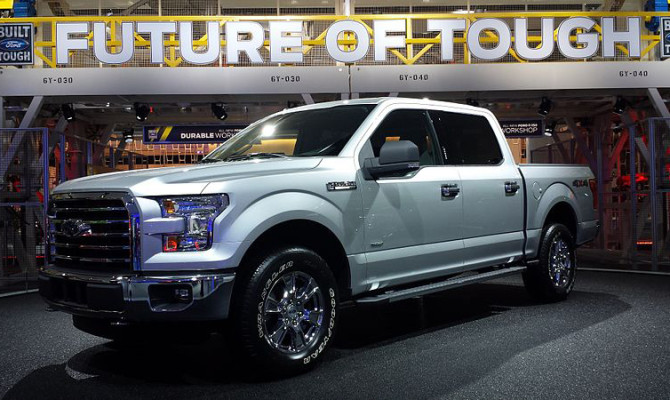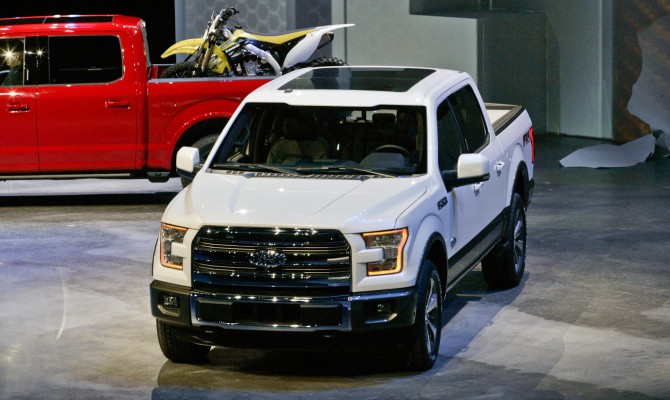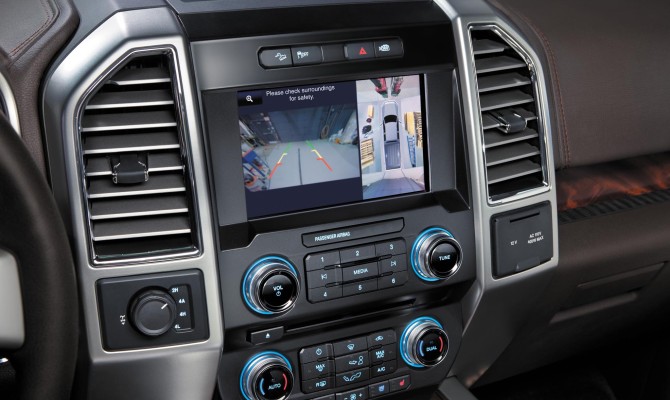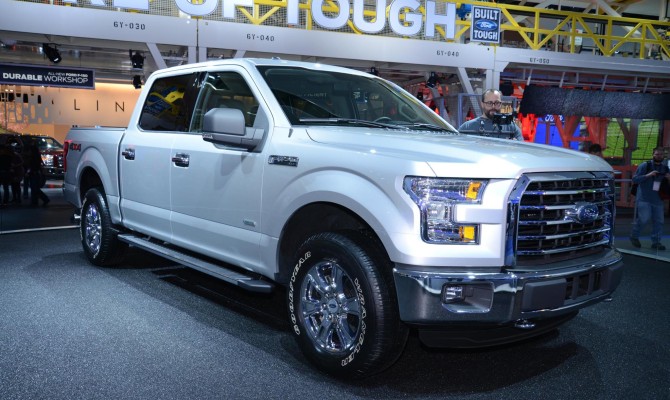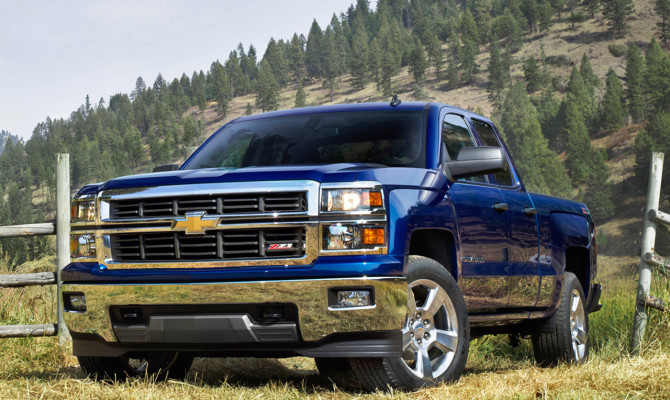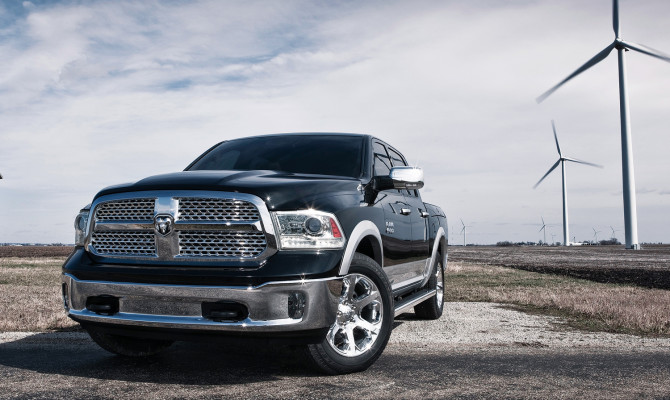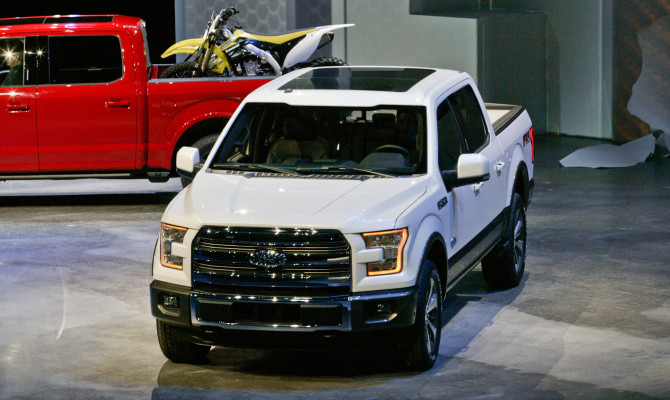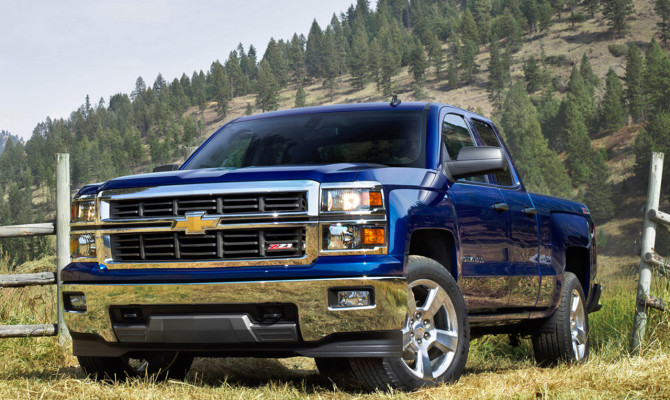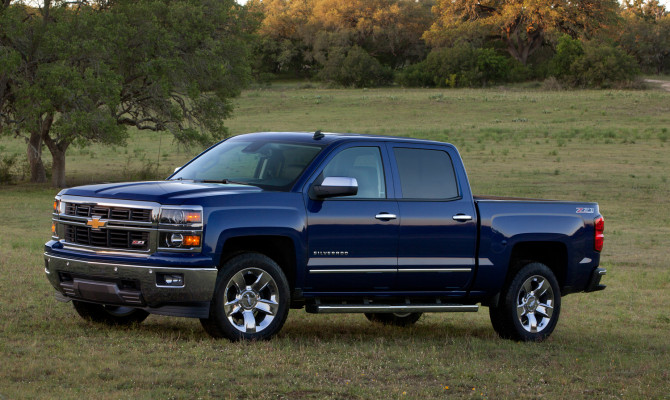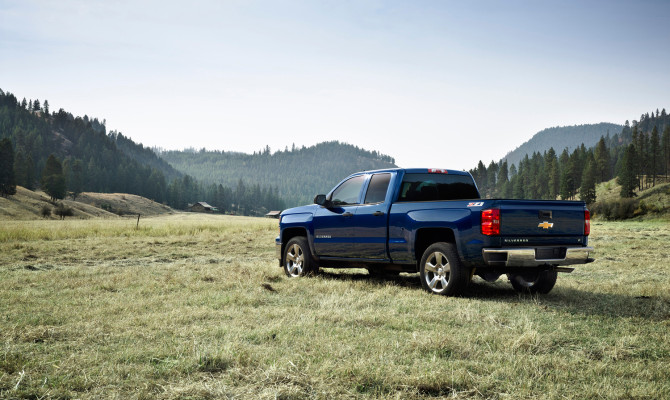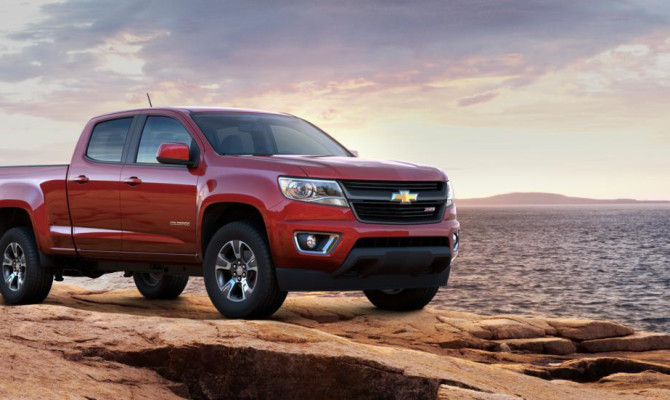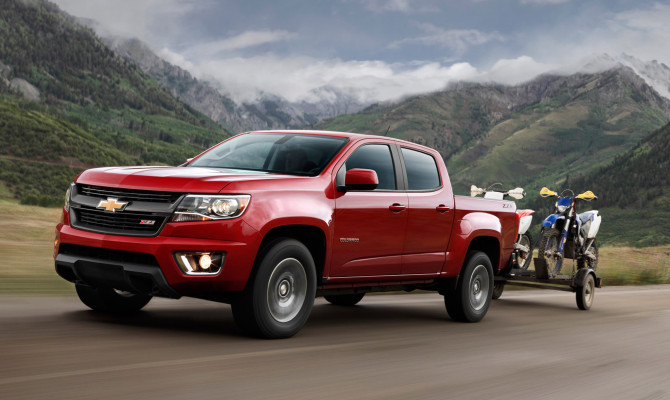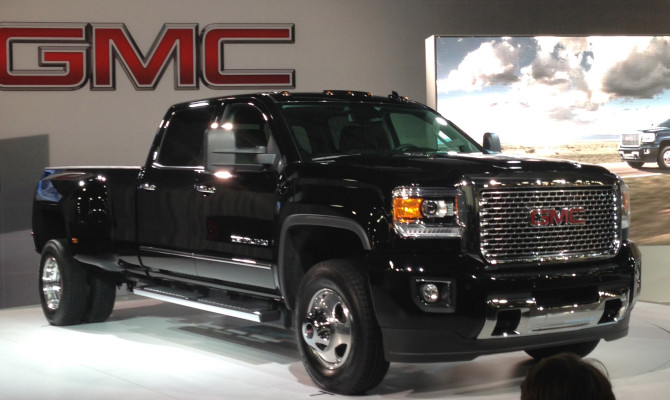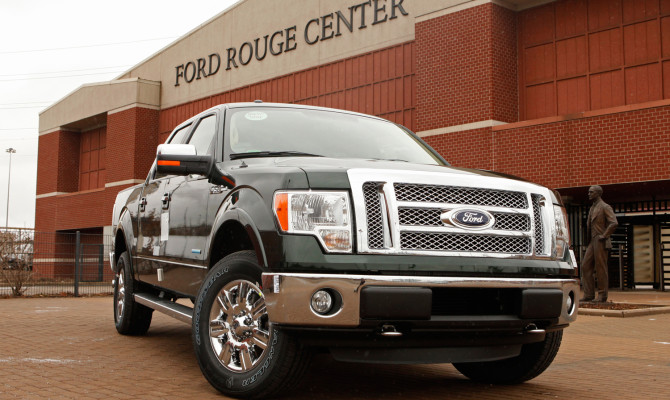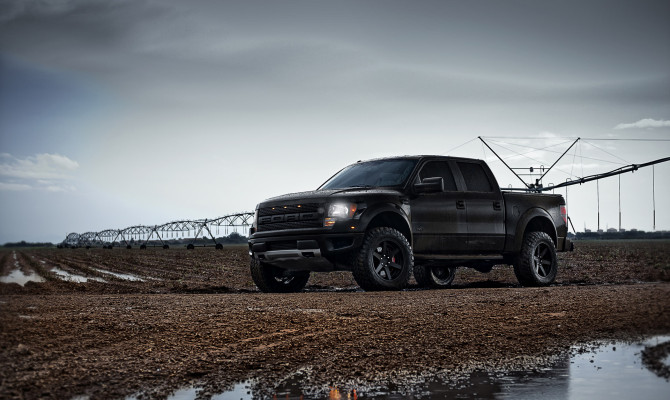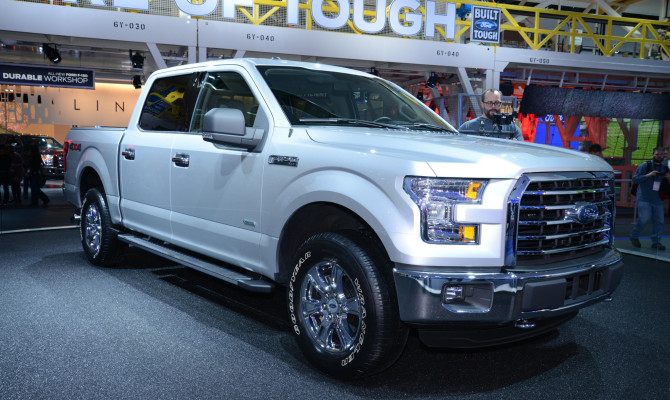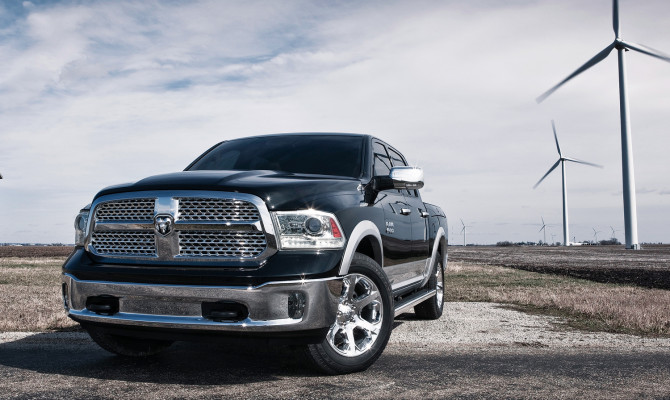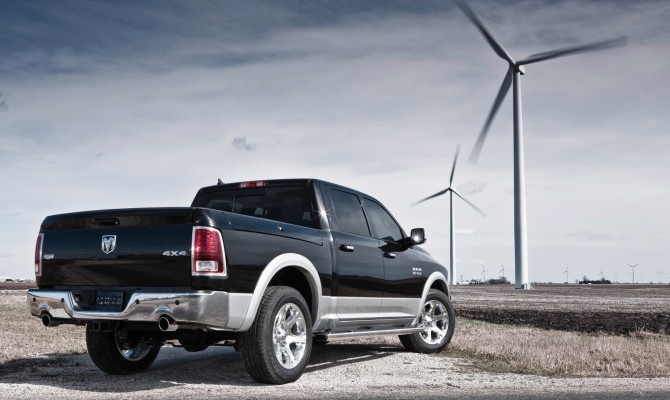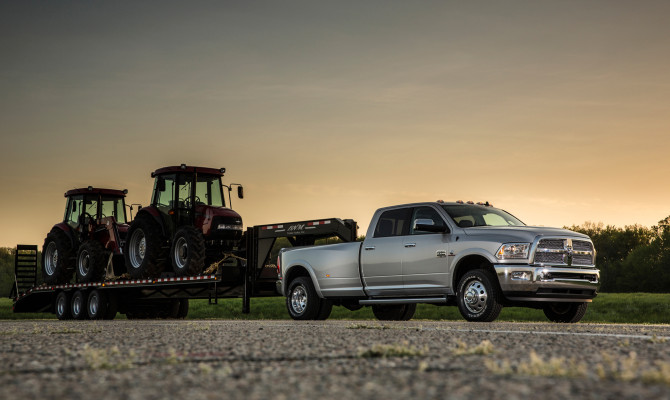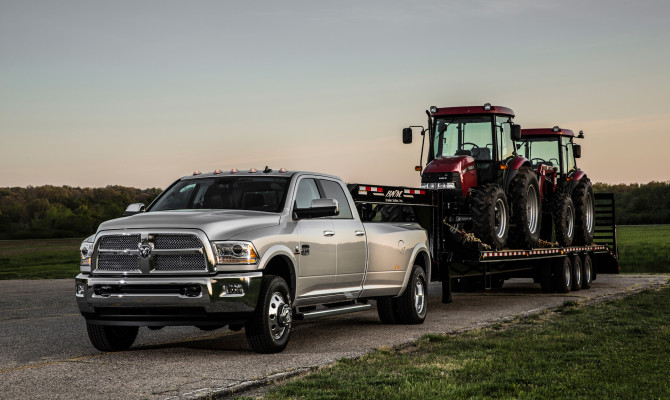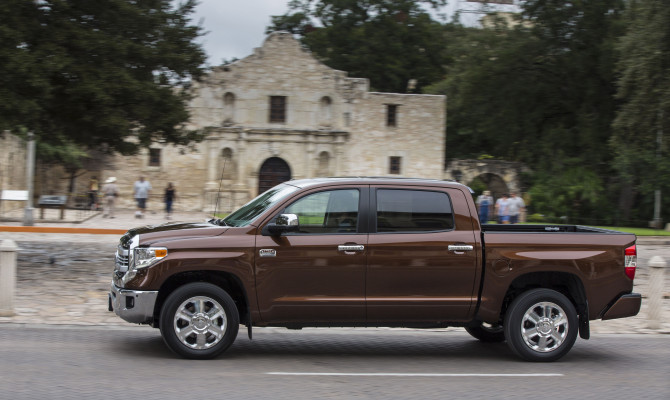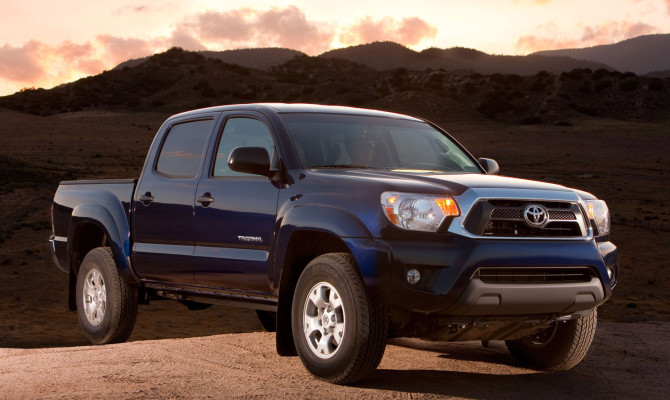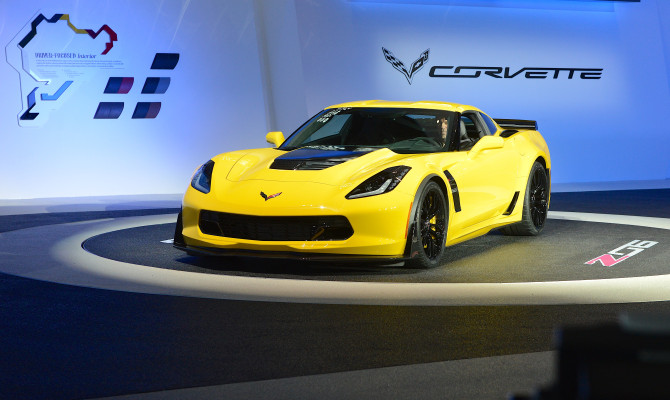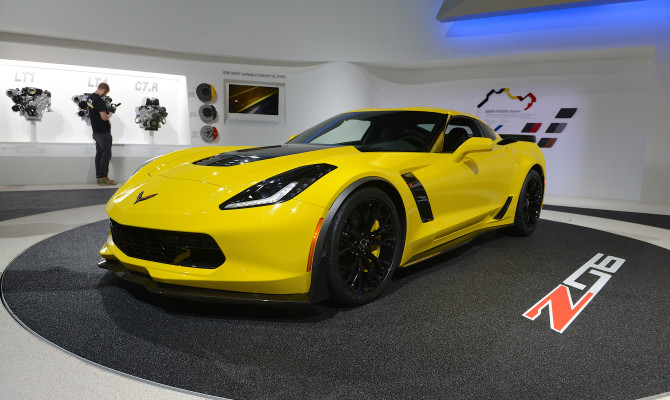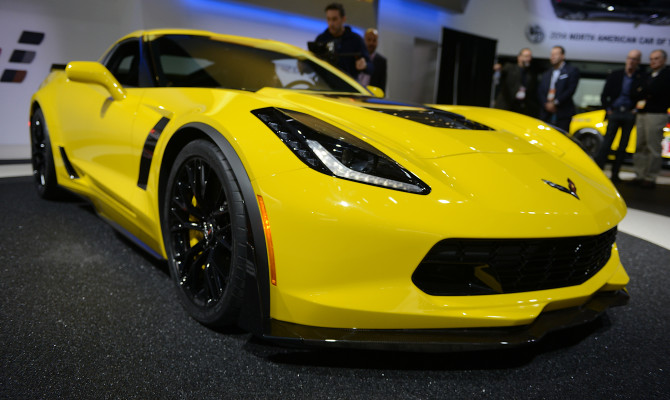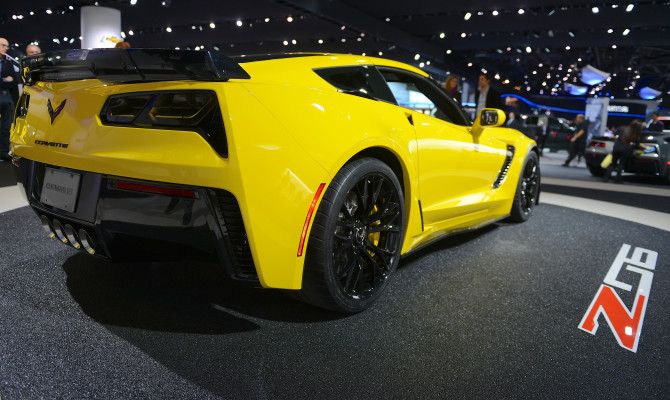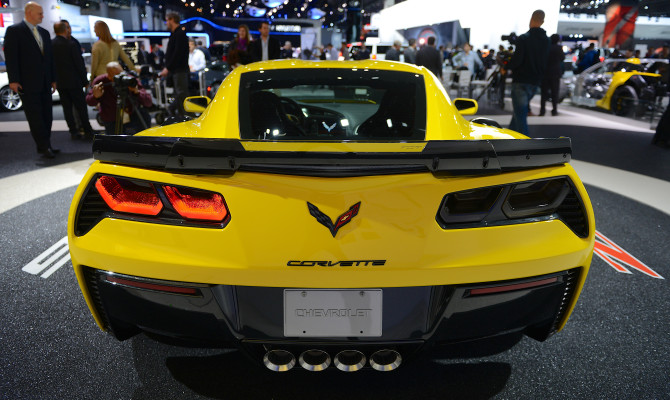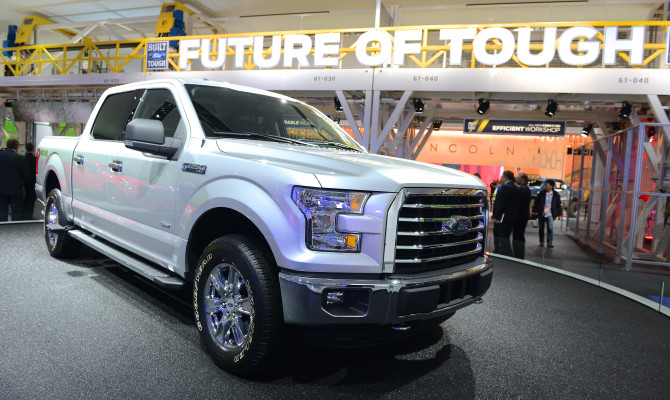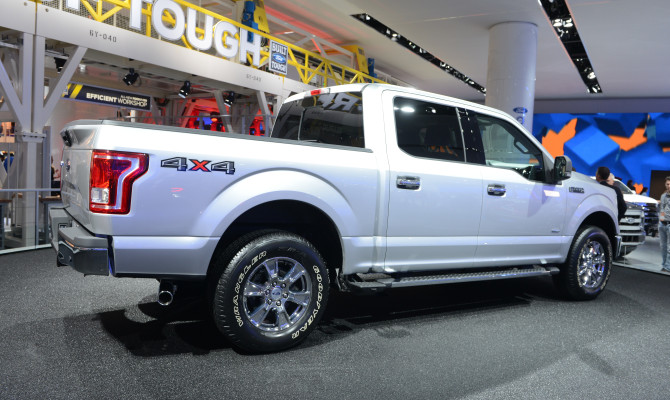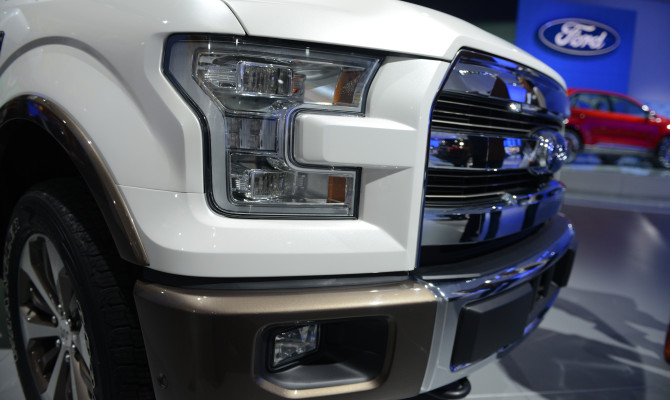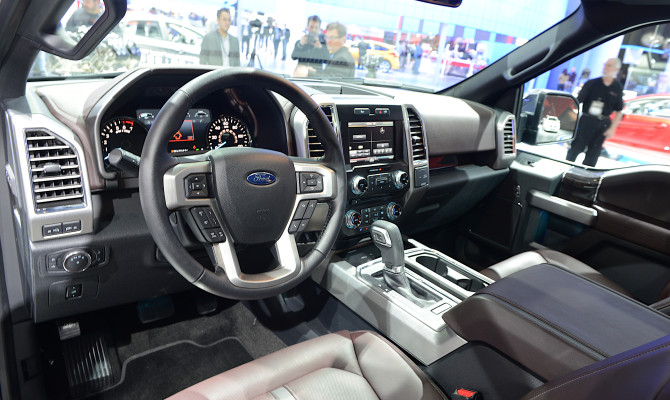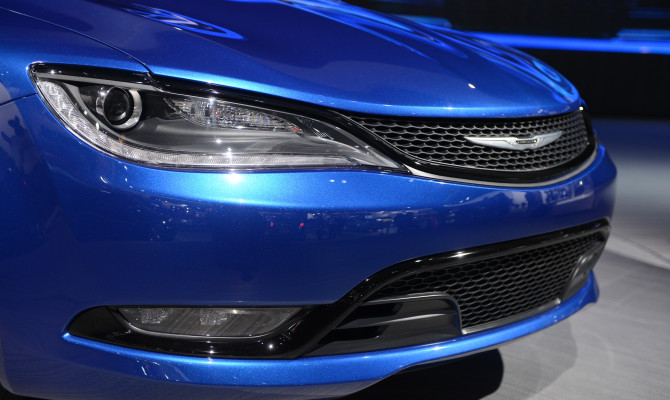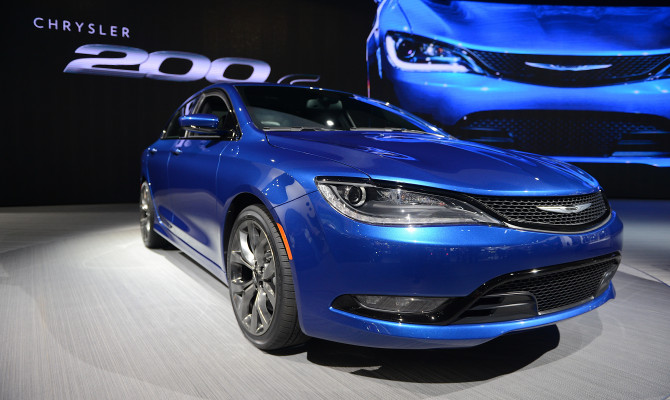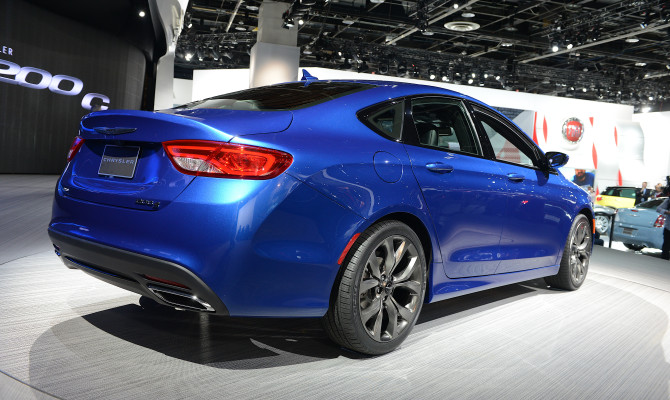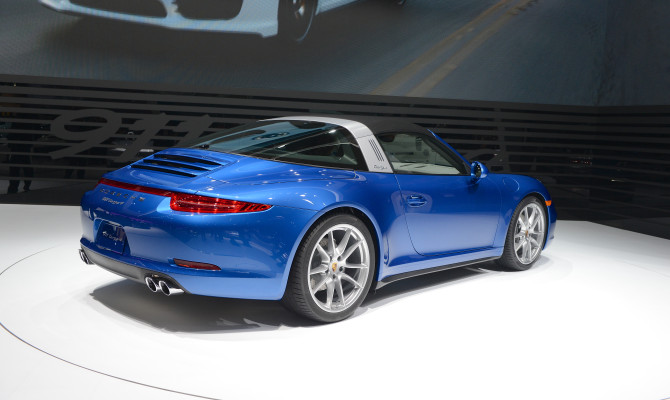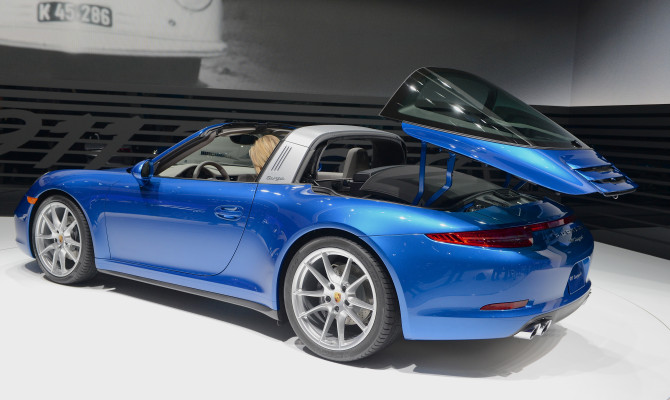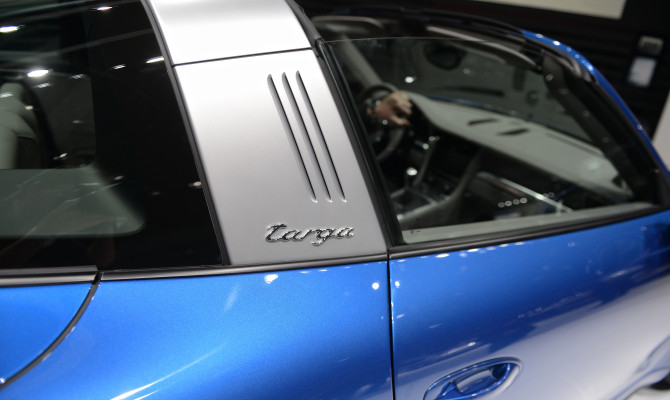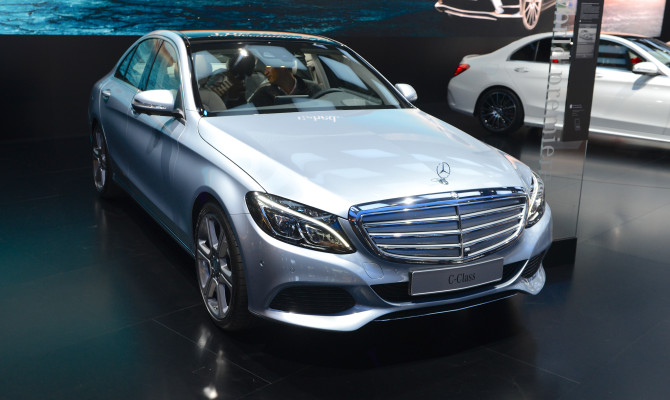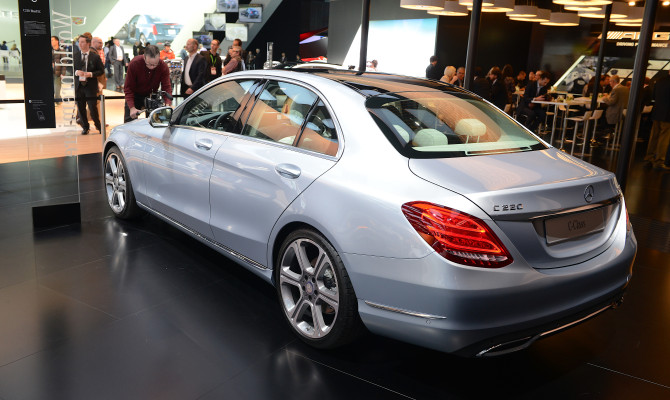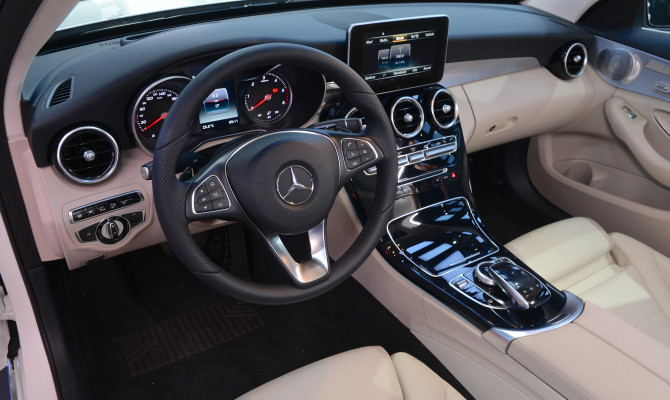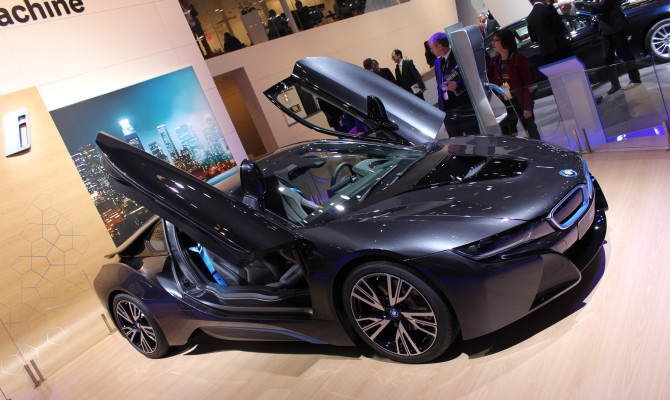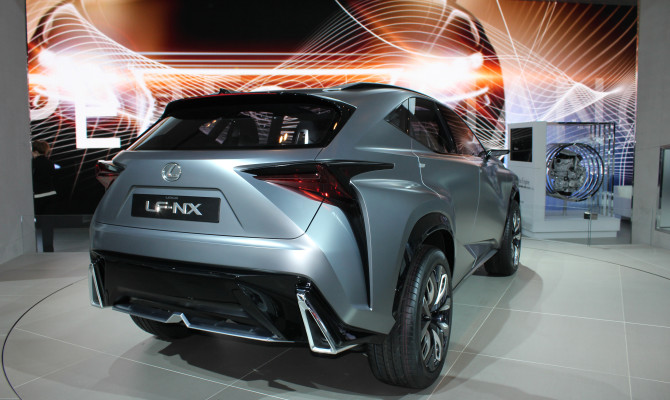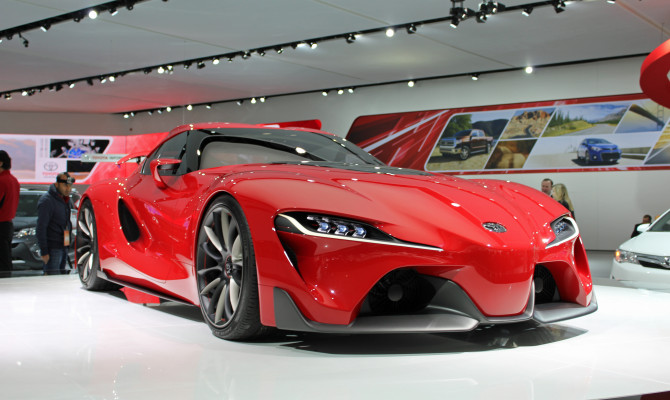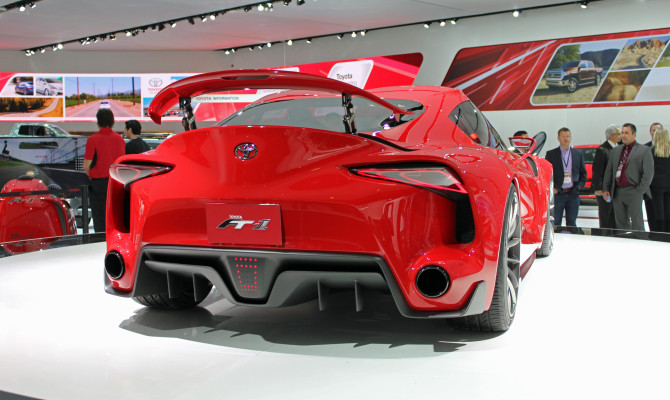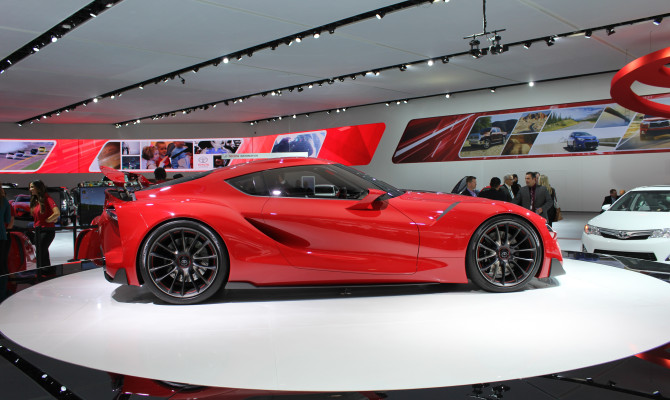“The all-new body features military grade, aluminum alloy sitting on a high strength steel frame…”
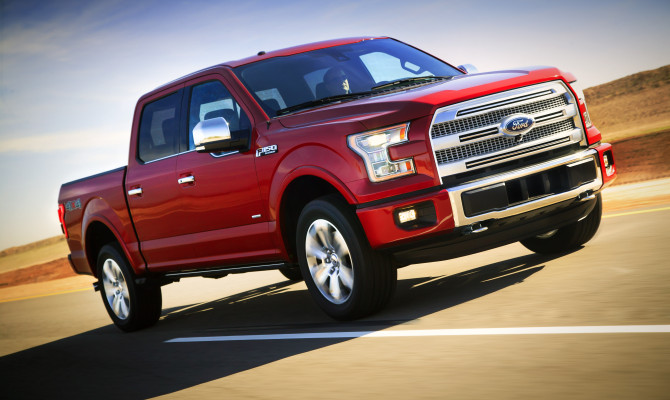
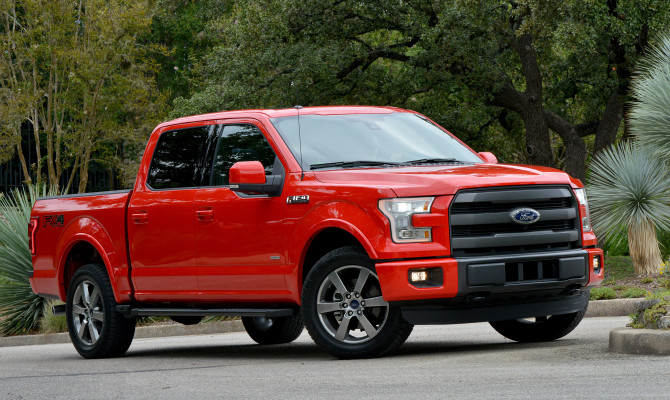
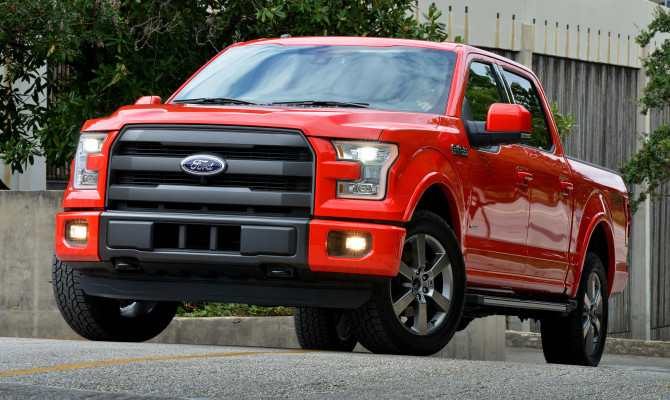
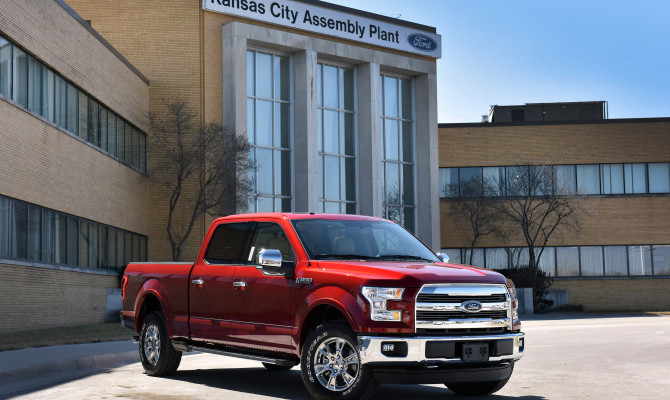
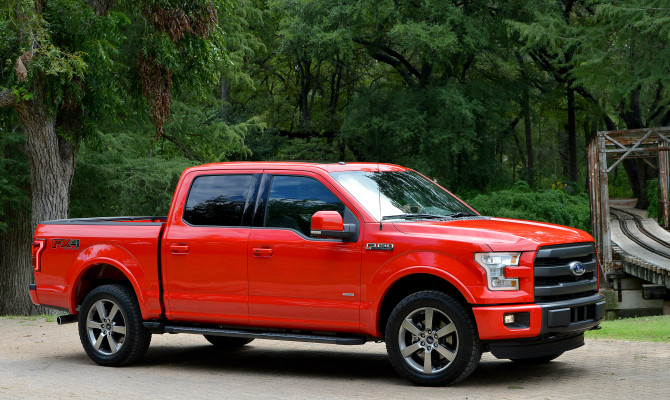
Ford is entering a brave new world with its extensive use of aluminum in its brand new F150.
It remains to be seen how many of its competitors will leap on the aluminum bandwagon but one thing for sure is this move will shake up the light-duty truck world.
Looks:
The all-new truck features smooth body lines with oversized fender flares, sleek headlights form part of the large oversized grille, with a blended in front bumper. These features truly stand out when you see this new F150 driving down the road and clearly differentiate it from the rivals. It’s very similar to the Atlas concept vehicle that was first shown a couple of years ago though it has been toned down a little in this latest version of the best-selling pickup in Canada.
The all-new body features military grade, aluminum alloy sitting on a high strength steel frame. The intent here is to create less overall weight without sacrificing strength. However, it is a bold move that may come back to haunt Ford. Real world driving of this vehicle will produce all kinds of scenarios. What happens when you need to fix the body panels, does the cost escalate to the point it is easier to write it off rather than repair? How will it hold up against constant towing or off-road use?
Time will tell, but you have to figure Ford has done some homework before unleashing the beast.
In The Cab:
It’s a spacious cab with a little more door width than the last version. You’ve got to like the 10-position adjustable driver’s seat, which is heated and ventilated. You won’t want to get out once you have arrived at the work site!
The Supercab and Supercrew models offer a fully flat floor providing ample cargo space. The beltline of the doors has been lowered a little and the front pillars are moved forward giving exceptional visibility. An available 8-inch LCD productivity screen on the instrument cluster can be set up to provide information tailored to your needs. Fuel consumption, towing, off-road applications offer precise information while driving. There is an optional 400-watt power inverter to can power your 110v items and, surely, that will become one hot option because of today’s workplace demands. Overall, I was impressed with the cab, very comfortable, good visibility and easy access to all the dash functions.
The panoramic roof option gives the truck a different feeling driving down the road. When the sun is shining the natural light warms the cab, it almost gives you the feeling you’re driving a convertible. I said almost.
Safety First:
Standard are front airbags with front driver and passenger seat mounted side airbags, safety canopy side curtain airbags.
Roadworthy:
My tester for the week was a SuperCrew short box version, although that sounds like an average size truck, it is not. The length of this vehicle is 6190 mm and parking in a small lot can be challenging. Backing in is your safest bet and with the use of the backup camera you are sure to get every inch of space available.
Steering is incredibly responsive and the ride is firm yet comfortable. Immediate power when you need it and plenty available to get this truck up to highway speed.
I quite enjoyed the drive and although my day was filled with errands, I still managed to relax as a drove throughout the city, only to have my bubble burst as I ran into never ending construction.
Verdict:
I found the new F150 to be slight improvement over the previous version with most of the improvements coming from the interior. The new body design is more of a personal preference and I think it will take me a while longer to come around. Give it a year and I will let you know if it was a hit or a miss.
Power:
Four engine choices here. 2.7L EcoBoost V6 with 325 horsepower and 375 lb-ft of torque, 3.5L EcoBoost V6 with 365 horsepower and 420 lb-ft torque, 3.5L Ti-VCT V6 with 282 horsepower and 253 lb-ft of torque and a 5.0L Ti-VCT V8 with 385 horsepower and 387 lb-ft
Pump frequency:
4X2
2.7L 12.2/9.2 L/100 km (city/highway)
3.5L 13.7/9.9 L/100 km (city/highway)
3.5L Ti 13.2/9.6 L/100 km (city/highway)
5.0L 15.5/10.6 L/100 km (city/highway)
4X4
2.7L 13.3/10.4 L/100 km (city/highway)
3.5L 14.2/10.4 L/100 km (city/highway)
3.5L Ti 13.9/10.5 L/100 km (city/highway)
5.0L 16.0/11.3 L/100 km (city/highway)
Warranty support:
Basic coverage: 3 year/ 60,000 km
Powertrain: 5 year/ 100,000 km
Sticker price:
XL – $24,899
XLT – $29,299
Lariat – $44,099
King Ranch – $60,499
Platinum – $62,499
“Customers may not have asked for an aluminum body, instead of steel, but there’s solid reasoning behind this change…”
Steel is out and aluminum is the new lightweight “in” material for auto body panels.
Hang on a minute, maybe it’s Carbon Fibre-Reinforced Plastic? These two materials, plus a very different type of hybrid, are entries for the 2015 AJAC Best New Innovative Auto Technology Award.
Ford – F150 Aluminum Body
“If I had asked people what they wanted, they would have said faster horses,” is a quote attributed to Henry Ford, founder of the Ford Motor Company.
The Ford F150 has been the best-selling in truck sold in Canada for the last four years. Customers may not have asked for an aluminum body, instead of steel, but there’s solid reasoning behind this change.
Aluminum reduces body weight by 40-to-50 per cent. It’s more resistant to corrosion issues and it’s 100 per cent recyclable. In addition to fuel efficiency benefits, a lighter vehicle also has positive influences on braking, handling, ride and acceleration.
A special heat treatment, developed by Ford, nearly doubles (compared to steel) the strength of the military grade aluminum (magnesium) alloy body panels used in the new F150, making them more resistant to dents. Much of the raw aluminum also comes from Canada, as does a good portion of the secondary processing.
Ford’s experience with aluminum body parts actually goes all the way back to the 1915 Model T. In 2009 it secretly built an aluminum body F150, for test purposes, and Ford engineers have also been able to draw from experience in developing current production vehicles such as the all-aluminum body Jaguar XJ.
BMW Carbon Fibre-Reinforced Plastic
The BMW i3 and i8 are two new all-electric vehicles with ultra-light-weight bodies made from Carbon Fibre-Reinforced Plastic (CFRP). It’s a man-made material that’s extremely strong and it’s about 30 per cent lighter than aluminum. This is the first time that the entire body of a production car has been made with a carbon fiber compound.
CFRP is a composite material consisting of carbon fiber surrounded by a plastic matrix (resin). It’s completely resistant to corrosion and is expected to have a substantially longer useful life than metal. It also remains stable under all climatic conditions, according to BMW, even when it’s exposed to large temperature fluctuations.
Carbon Fiber is not a new material to auto racing enthusiasts, where its exceptional strength and light weight make if an ideal body material. CFRP has also been used to make trunk lids, roofs and even drive-shafts in the sporty M Series models by BMW. The main drawback to using carbon fiber in mainstream production vehicles, however, has been its cost, which brings up a Pacific Northwest connection,
All of the carbon fiber use in i3 and i8 comes from a new production plant in Moses Lake, Washington State. In fact, BMW has plans to triple capacity in Moses Lake and make it the world’s largest carbon fiber production plant. More and more BMW models are expected to include components made with CFRP and large-scale production is expected to reduce unit costs.
Honda/Acura – Sport Hybrid SH-AWD
The hybrid edition of the new Acura RLX includes the first-ever electronic (torque vectoring) Super Handling All-Wheel Drive (SH-AWD) system used in a production hybrid vehicle. This RLX is also the most powerful Acura production model ever built. Combined peak output is 377 horsepower and peak torque to the front wheels is 273 lb-ft at 4,700 rpm. Yet, its fuel consumption is incredibly low, at just 8.0/ 7.5/ 7.7 L/100km (city/highway/combined).
The hybrid powertrain includes three electric motors, one up front and two in the rear, and they all provide both power assist and regenerative charge to a battery pack. The gas engine is a 3.5-litre, 310-horsepower V6 with Variable Cylinder Management that’s linked with the 7-speed dual-clutch transmission.
Acura’s super-handling all-wheel-drive uses “torque vectoring” to create a yaw moment that helps the RLX turn effortlessly. It functions like an enhanced differential that sends more power to the outside rear wheel during cornering. And, like magic, you’re a much better and smoother driver. The RLX’s sophisticated hybrid system can also allows it run strictly on battery power with the rear motors driving the vehicle.
The 2015 AJAC Best New Auto Safety Technology Award will be announced at the Montreal Auto Show on January 15, 2015.
Ford’s claims will have to play out on roads, across Canada, in the coming years but from what I’ve seen in Texas, I’d say “Giddy Up!”
(more…)
Sam Walton, founder of Walmart and one of the richest men in America, drove the same 1979 F-150 Custom 4×4 to work every day until he died in 1992…
written by B. Mitchell Carlson
Driveway Canada
**********
The F-150 has been the best-selling pickup truck since 1978.
Yes, 36 years – that’s longer than a lot of you reading this have been alive. However, there are a few things about Ford’s popular pickup that most people don’t know about.
The earliest Ford pickup wasn’t an F-series…
Although Ford offered delivery-bodied cars sporadically since 1905 and one-ton trucks since 1917, its first factory-assembled “pickup” was built on April 15, 1925. The 33,795 1925 model T runabouts with pickup body sold for $281.
Why it was called the F-150…
The earliest use of the F-series name dates to the all-new 1948 Ford trucks, the half-ton model being the F-1. Ford made the jump to the F-100 name in 1953, but the F-150 nomenclature didn’t arrive until 1975. This was a model that debuted to evade emissions requirements, as it was essentially a “heavy half” pickup rated at just over 6,000 pounds gross weight – the line in the sand drawn by the EPA at the time, which required catalytic converters and subsequently unleaded gasoline. International Harvester also did this for 1975 – its final year of pickup production – making all half-ton 100 models 150s, to avoid installing catalytic converters. The final year of the F-100 was 1983 – by which time leaded vs. unleaded was a moot point.
Built all over North America, then there were two…
When introduced for 1948, The F-1 was built at all 16 U.S. assembly plants that also built Ford cars. In 1956, with trucks becoming more specialized along with the opening of the Detroit Truck Plant, Ford started consolidating truck production to fewer plants. Beginning in the late 1970s, Ford split its North American assembly groups into car and truck. Today, only two plants build all F-150s globally – the Kansas City Assembly Plant in suburban Claycomo, Missouri, and the Dearborn Truck Plant near Dearborn, Michigan.
Off-white or chrome?
The front bumper was longest-running component constantly used on every single pickup and remained unchanged during the F-series era from 1959 to 1979.
I guess he liked it…
Sam Walton, founder of Walmart and one of the richest men in America, drove the same 1979 F-150 Custom 4×4 to work every day until he died in 1992. When asked why in an interview, he stated “What am I supposed to haul my dogs around in, a Rolls-Royce?”
Today it can be seen enshrined in the company’s visitors centre/museum in Bentonville, Arkansas.
We saw glimpses of this with Ford’s concept truck but did not expect it to become reality so soon…
The all-new 2015 Ford F150 turned some heads at the Vancouver International Auto show including mine.
Here’s close look at what’s new and different. I think the first thing that impresses is the new styling. The LED back lit headlights are a real stand out and the grille is a three-bar traveling all the way down to the bumper, very nice.
Next noteworthy change is the super lightweight military grade aluminum alloy body, weighing almost 318 kgs less than the previous model. We saw glimpses of this with Ford’s concept truck, the Atlas, but did not expect it to become reality so soon. No waste of materials building this new truck. Any unused aluminum during manufacture is reclaimed.
When it goes on sale late this year, there will be five trims available: XL, XLT, Lariat, Platinum and King Ranch. Chrome appearance packages are available with them all. Monochromatic sport appearance packages are available with all but the King. Optional power running boards drop down into position only when the doors are opened and remain tight against the body.
Some of the safety concerns expressed around driving a pickup are addressed with the use of sensors in the advanced personal safety system that control deployment of the dual stage front airbags, front seat side airbags, and side canopy air bags. Advance-Trac and roll stability control comes standard.
MyKey technology allows you to program the ignition keys with reminders to drive at appropriate speeds, limit the volume on audio system, limiting the vehicles top speed, muting the audio system until the front seatbelts are fastened.
There are second-row inflatable safety belts, which work like a traditional belt but include a tubular airbag that inflates in the event of a crash and distributes the force of the impact across a wider area of the passenger’s chest
A feature called Curve control, automatically provides more aggressive four-wheel braking when the truck is going into a corner too fast.
There are host of safety systems. Adaptive cruise control, allows drivers to set a cruising speed and use radar technology to monitor traffic ahead and maintain a safe distance between vehicles. The lane keeping system is designed to help avert unintentional drifting of the vehicle outside the intended driving lane. It automatically detects the left or right-hand road lane markings using a camera mounted between the windshield and interior rear-view mirror. The Blind Spot Information System with cross-traffic alert uses radar hidden in the taillights to detect a vehicle entering a driver’s blind spot while driving or backing up.
Can’t believe I’ve got this far talking about a truck without mentioning power! – One of the engine choices is a new 2.7L EcoBoost engine that has undergone more than 16 million kilometres of testing. The other motors are the new 3.5L V6 EcoBoost that combines the efficiency of twin independent variable camshaft timing, and flex fuel capabilities, a 3.5L EcoBoost engine, which we are familiar with and a 5.0L V8.
The trucks equipped with EcoBoost engines will benefit from standard Active Grille Shutters. Active Grille Shutters stay open when extra engine cooling is needed, such as during low-speed stop-and-go driving or while working in hot weather. They automatically close to reduce aerodynamic drag at cruising speed.
Fuel economy numbers and prices should be released soon.
Stepping into a pickup today is like stepping into a luxury home with even more technology…
Years ago, we would see a pickup truck at an Auto Show (a rare find) and think this would be perfect on the farm; it has a bench seat that would fit all three of us!
My how things have changed, stepping into a pickup today is like stepping into a luxury home with even more technology. Trucks are now outselling cars, so manufacturers must keep looking for innovative designs to entice the consumer into selecting their vehicle over the competition. There are many trucks on the road today but let’s look at the three domestic brands, all of which will be represented at the Vancouver International Auto Show.
Ram introduced the EcoDiesel V6 engine in its 2014 1500 model and the consumer frenzy was on. A half-ton pickup with 420 lb ft of torque and 4182kg (9200 lbs) max towing capabilities, great!
Better fuel economy, where do I sign?
Ford announces the 2015 F-150 with an aluminum body and a completely new design, this had Ford customers holding off on their new purchase until this comes out, which I do not think was Ford’s intention.
GM changes not only the design of their truck but much of their drivetrain. So much so, that it was named North American Truck of the year.
Consumers are demanding these changes, they want better fuel economy but still are able to tow just as much. They want more comfort but still have a practical interior. They want comfortable suspension but still perform off-road if necessary.
Manufacturers have to consider all this when designing a new truck. They set up focus groups all around the country asking how they can improve and what features consumers want in a truck.
So what’s driving sales, what do pickups have over cars and why are they so popular? Versatility, you can transport large items, haul your favorite ‘toy’, take your family in comfort to the cabin, get out and play in the mud. I am not saying you can’t do this in a car but with a truck there are no limitations and that’s what intrigues people into this type of vehicle.
You can do so much more with a truck, the possibilities are endless. The truck is just the beginning, the customization then begins. Research shows that on average a truck owner spends between $5,000 and $7,000 in aftermarket accessories within the first six months of ownership. Truck owners want to personalize their vehicles for practical reasons and some artistic reasons, but rest assured, if you can dream it there is somebody out there building it.
Ten years ago, I would have said things are slowing down and there might be a change coming, but it didn’t happen and things picked up and it keeps picking up. I now think it will continue and in another ten years, we will see even more choices, enabling us to take the time to enjoy life on and off road.
What are my favourite trucks? – It’s a question readers ask me all the time in the supermarket and on the street.
Though not in order of preference, here are my ten choices.
2014 GMC/Chevy Silverado/Sierra
The half-ton pickup has gone through some monumental changes this year. What an improvement with a very comfortable and refined interior on all trim levels, and three engine choices, the Eco Tec 4.3-litre V6, 5.3-litre V8, and a 6.2-litre V8.
2015 Chevrolet Colorado
Very similar in design to its big brother the Silverado, this midsize truck fills a void in Canada. Still expected to work as hard as a full-size truck, the Colorado can tow more than 3,039 kilograms (6700 lbs) a 2.5L I-4 engine is standard with an optional 3.6L V6 with a six speed automatic transmission.
2015 GMC 3500HD
Denali is a beast. This truck is built to pull and with 10,251 KG (22,600 lbs) of trailer towing capacity it does just that. The 6.6L V8 turbo engine delivers 397 hp and 765 lb ft of torque and is paired with a 1000 series Allison transmission. With interior upgrades such as 12-way power adjustable bucket seats, heated leather wrapped steering wheel and a Bose sound system you can operate it in comfort.
2014 Ford F150 Ecoboost
With more than 100,000 Eco Boost engines being produced monthly, you can bet a majority of these engines are finding their way into the 2014 F150 pickup. It holds the record in Canada for highest pickup sales, and at 12.9/9.0 L/100 km (city/highway) it keeps the money in your wallet a little longer.
The 2014 Ford Raptor is still one of my favorite off-road vehicles. It has electronic locking rear differential, shift on the fly 4 wheel drive, advance trac with roll stability control, and trailer sway control. Front and rear mounted cameras to add a second pair of eyes to the terrain around you and a 6.2-litre V8 engine to help you get up and over that hill.
2015 Ford F150
All new design features and a completely aluminum body and high strength steel in its frame make this truck up to 317 KG (700 lbs) lighter. It has 11 new class-exclusive features, including 360-degree camera view, integrated loading ramps stowed in the pickup bed, 400-watt power outlets inside the cab, LED headlights and side-view mirror spotlights, and remote tailgate release.
2014 Ram 1500 EcoDiesel
This is a much-anticipated truck from Ram With a 3.0-litre V6 Diesel engine with a torqueflite eight-speed transmission. Not only will the Ram EcoDiesel give you 420-pound feet of torque and plenty of towing capabilities, it will also reduce co2 emissions and run on B20 Biodiesel. It’s a game changer.
2014 Ram 3500
The largest and most capable pickup Ram has to offer. Alterations to the frame including eight separate cross members, hydro formed frame rails and high strength steel add up to a truck that is capable of towing of towing up to 13,607kg (30,000lb). A 6.7l Cummins turbo diesel engine delivers 385 hp and 850 lb ft of torque.
2014 Toyota Tundra
New body style this year, impressive hood and fender design. The western themed 1794 Edition commemorates the founding year of a Texas ranch where the Tundra plant is situated. This interior is covered with Saddle tan brown leather seats and rich maple wood grain panels throughout. It is powered by a 4.6-litre or a 5.7-litre engine.
Can it compete with the big boys? This is the year to see.
2014 Toyota Tacoma
The Tacoma has continued to increase popularity and is a very agile four-wheeler. The double cab gives plenty of room for all your buddies and the 4.0-litre V6 engine can get you to your favorite fishing hole and back. With the addition of some modern day technology such as Backup camera, heated seats, 6 airbags, and a power invertor, this truck has everything I am looking for in a pickup.
The Corvette won the North American Car of the Year award, exactly a year after it debuted…
The motor city was abuzz at this year’s Detroit Auto Show. The car industry is roaring back in the US and we have record sales in Canada, so there are many new products for all segments of the market.
Corvette Z06
The performance Corvette Z06 got its name back in the 1960s when customers could order a high performance “Z06” package that delivered a track-ready Corvette.
Today, Chevrolet is still delivering track-ready Corvettes, now they come with the Z06 name. The all-new 7th generation Corvette Stingray was unveiled last year in Detroit and it won the North American Car of the Year award, exactly a year after it debuted. This year it was all about Z06, featuring a 625hp all-new supercharged engine with an all-new eight speed automatic transmission and for the first time the roof panel is removable for open air driving. Using the same all-aluminum platform as the regular Stingray, this new car is lower, with bigger tires and brakes, more cooling inlets and in initial testing, is the fastest Corvette Chevrolet ever made.
The Z06 will be available in the early part of 2015.
Ford F-150
Any new F-150 is a huge deal for Ford, as it is the number one selling truck in Canada for the past 48 years and the best selling vehicle overall.
The big news is that the all-new F-150 is now constructed using lighter high-tensile steel in the chassis, and high strength aluminum alloys in the body, mostly the trucks box. This combination contributes to a 318-kilogram reduction in weight, helping to make the truck stronger and much more fuel-efficient. There will be four engines available from a base 3.5L V6 to a 5.0L V8 and two Ecoboost engines, a 2.7L and 3.5L V6. Ford did not have specific fuel economy numbers but there will be a significant improvement over the existing truck. Other improvements include an improved tailgate stepladder that folds away easier and power locking and folding tailgate.
The New 2015 F-150 will be available later this year.
Chrysler 200
Some might remember the Chrysler Sebring sedan. That nameplate was retired and rebadged as the Chrysler 200.
This all-new Chrysler 200 is light years away from that old platform. In fact, it uses the same Alfa Romeo platform found under the Dodge Dart and impressive Jeep Cherokee. The strong points of this platform are excellent on-road manners with a quiet interior and superb handling. There will be a 2.4L 4-cylinder engine with 184hp or the optional 290hp 3.6L engine found in many other Chrysler products. The Chrysler 200 will have front wheel drive or optional all wheel drive, derived from the same system used in the Jeep Cherokee. This will provide Chrysler with a unique offering as most other manufacturers stick with two-wheel drive. The interior features the Uconnect computer interface system and is covered in soft-touch materials and supportive seats.
Look for the all-new Chrysler 200 to arrive in late spring and starts at $22,495.
Porsche 911 Targa
One car that pulled big crowds was the new Porsche 911 Targa. We all know what a Porsche 911 looks like; they have been modifying the same basic shape for over 50 years.
What this new Targa has is a retractable roof system that will stop traffic. At the push of a button the whole rear of the car releases and the centre convertible roof is stored underneath, then the rear section is again attached. The back panel incorporates a wrap around rear window, making a distinctive statement while keeping the overall design of the car intact. Previous Targa models had either a removable centre panel of a glorified, oversized sunroof, this new model is the best of both.
Starting at $115,900, all Targa models will come with AWD and will arrive this spring.
Mercedes Benz C-Class
The C-Class is so important to Mercedes brand in North America that they held the world debut of the C-Class here, plus it is their number one selling car. Arriving later this spring and summer, this new compact sedan is a longer and wider and uses a combination of high-tensile steel and aluminum components to shed 100kg for a 20 percent reduction in fuel economy. An all-new turbocharged 2.0L 4-cylinder is the base engine with 235hp. The optional 328hp 3.0L V6 is the other power plant initially. The highlight is the more dynamic looking exterior and superb interior. The dash is stunning, featuring a touch screen iPod type screen mounted on the back.
*The best and brightest from the 2014 Detroit Auto Show, from American muscled classic like the Corvette and the Mustang to the newest from Toyota, Fiat, KIA, and Mini’s John Cooper Works…
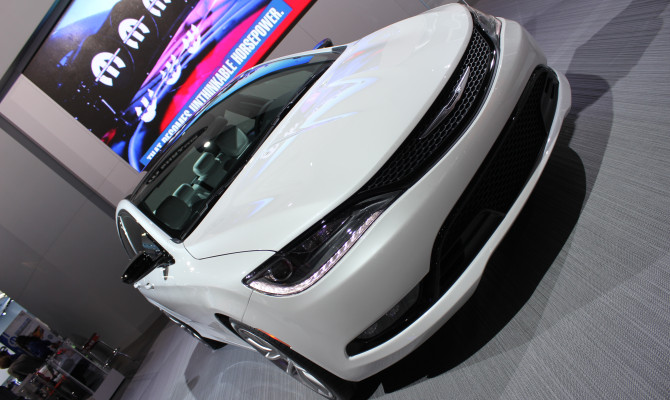
2015 Chrysler 200: Chrysler’s answer to the mid-size sedan challenge from the likes of the Ford Fusion and Honda Accord. Due later this year.
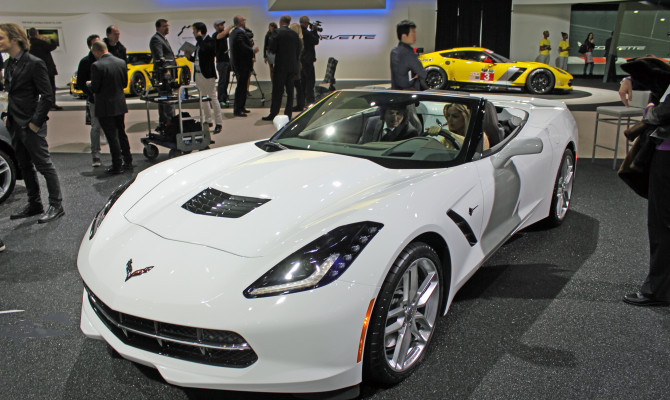
2015 Corvette Stingray: The all-new Corvette Stingray—the seventh generation, or C7, as it is known, scooped the North American Car of the Year award at the Detroit show.
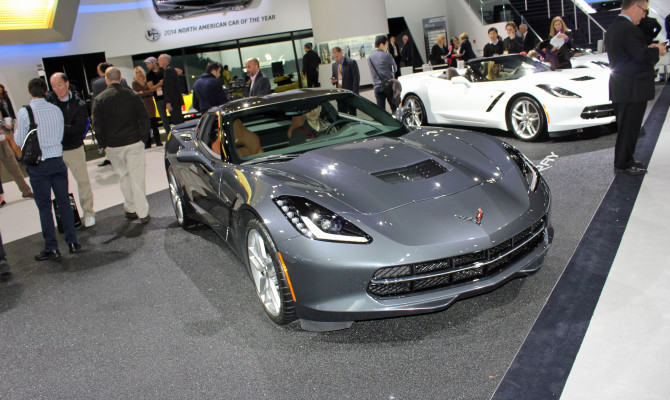
2015 Corvette Stingray: The all-new Corvette Stingray—the seventh generation, or C7, as it is known, scooped the North American Car of the Year award at the Detroit show.
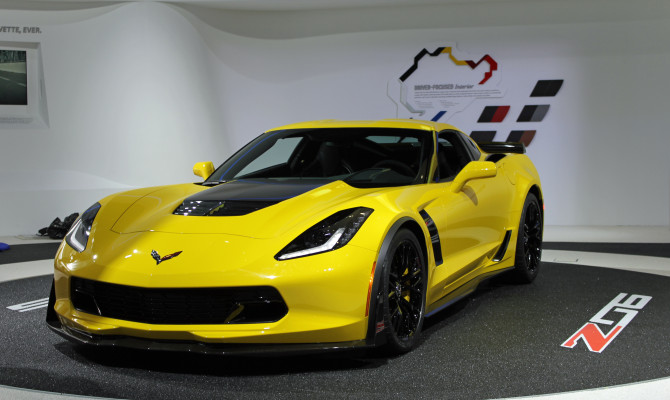
2015 Corvette Stingray: The all-new Corvette Stingray—the seventh generation, or C7, as it is known, scooped the North American Car of the Year award at the Detroit show.
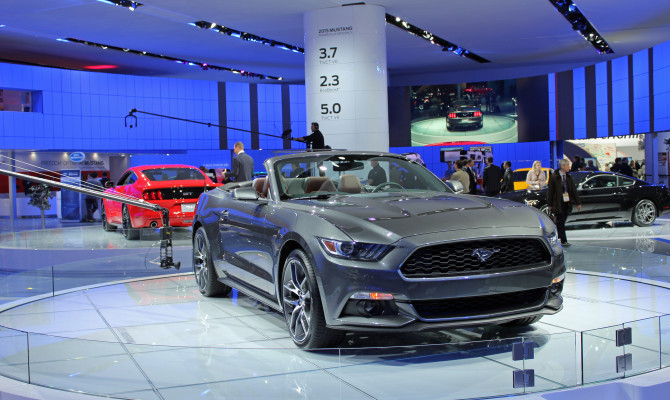
2015 Ford Mustang: The Mustang has won the best production car award at the 2014 Detroit Auto Show. It will arrive in dealerships worldwide in the fourth quarter of the year.
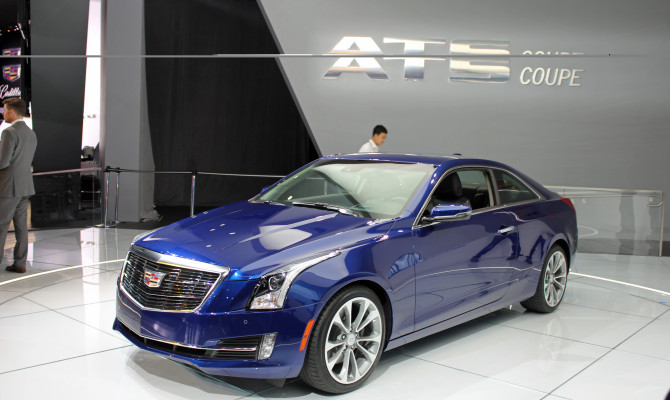
2015 Cadillac ATS Coupe: The Coupe is an all-new car, based on the popular new ATS sedan. Should be in dealerships by the summer.
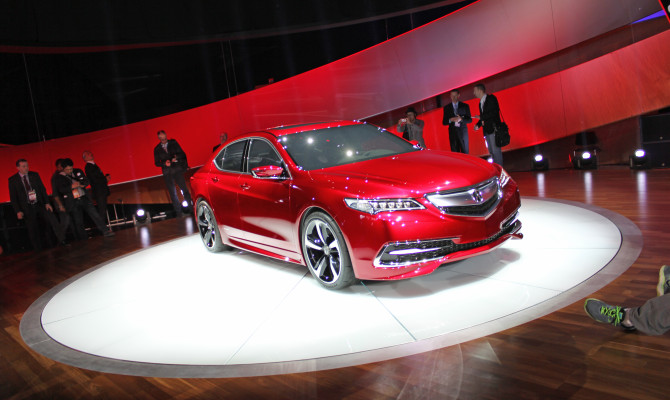
2015 Acura TLX prototype: The production model will replace the TL and TSX this summer. The TLX. designed by Acura’s California design studio, will be available with a 2.4-litre I4 engine or 3.5-litre V6.
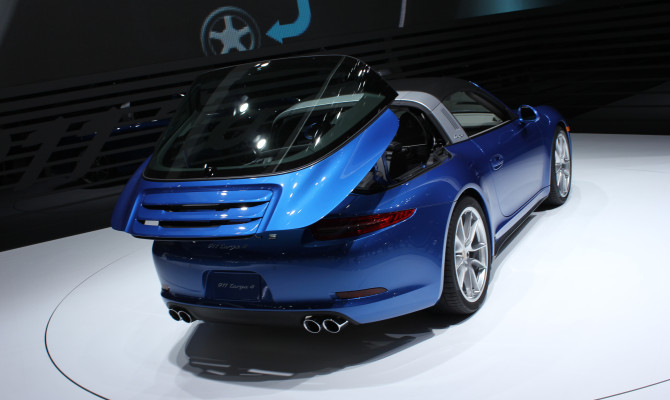
2015 Porsche Targa4: The design pays subtle homage to classic versions but a very contemporary engine powers it. The options are a 3.4 litre with 345 horsepower or a 3.8 litre with 395 hp.
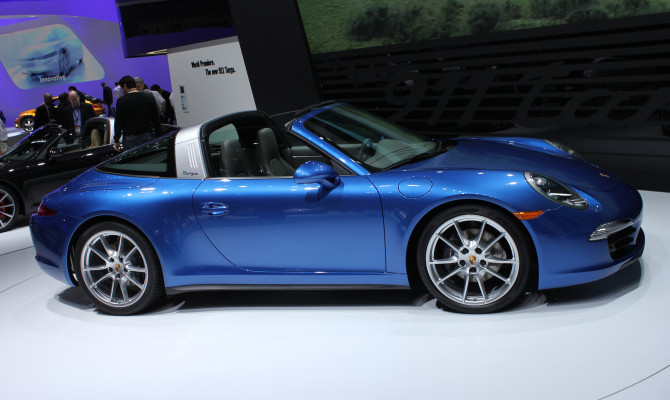
2015 Porsche Targa4: The design pays subtle homage to classic versions but a very contemporary engine powers it. The options are a 3.4 litre with 345 horsepower or a 3.8 litre with 395 hp.
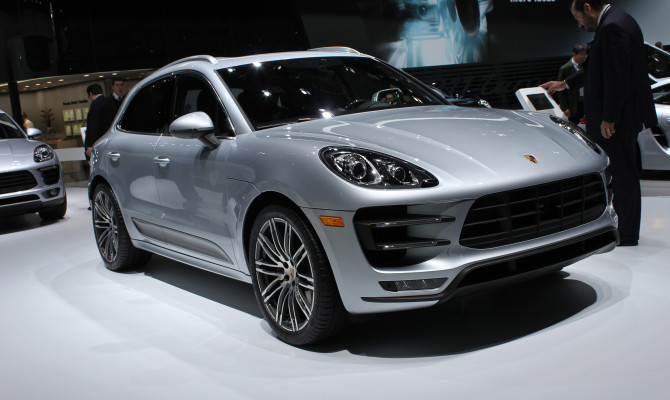
2015 Porsche Macan: The German performance car manufacturer’s all new entry level crossover-sport ute.
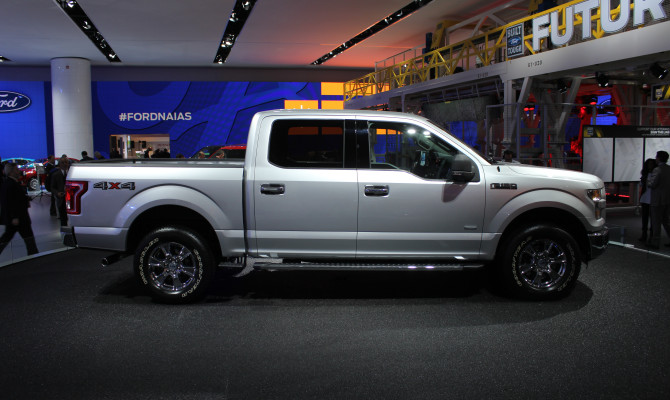
2015 Ford F150: Ninety-three percent of that new body is made from an aluminum alloy similar to what the US military uses in its M2 Bradley fighting vehicles and Humvees. A new 2.7-litre EcoBoost V6 option is added to the engine lineup and it features auto start-stop.
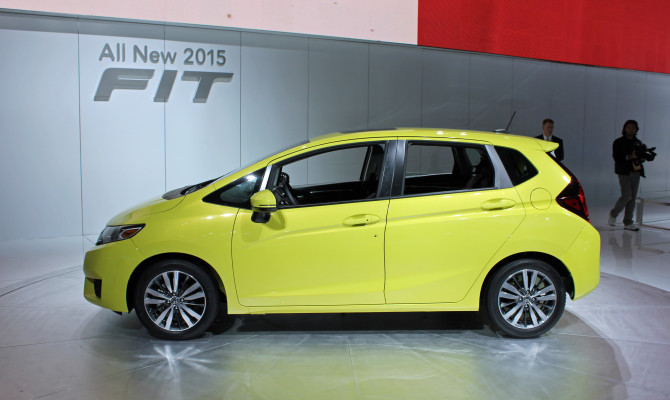
2015 Honda Fit: The new fit gets a 1.5-litre, direct-injection four-cylinder engine mated to a continuously variable transmission. Fuel consumption is estimated to be a miserly 7.13/5.74 L/100km (city/highway).
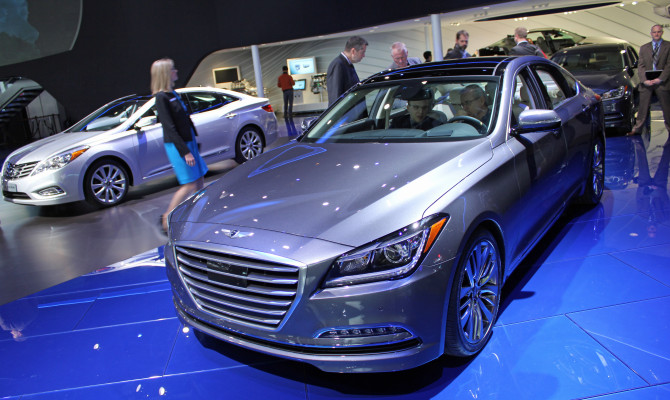
2015 Hyundai Genesis: The all-new, second-generation Genesis Sedan offers luxury at sticker price in the low $40,000 mark. The engine options are a 5.0-litrer V8 or a 3.8-litre V6.
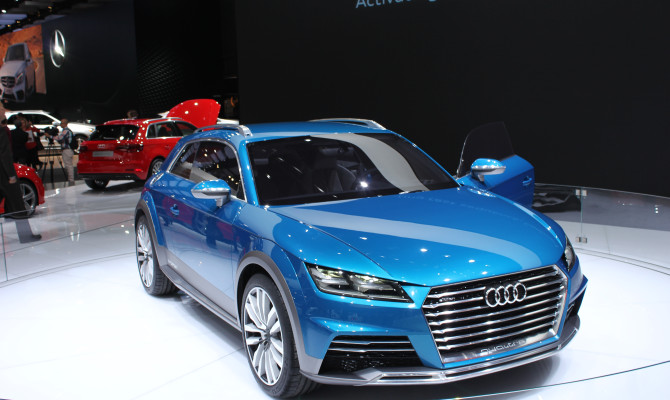
Audi All Road Shooting brake concept: Based on the forthcoming TT, this concept uses the S3’s 2.0TFSi engine of 292hp. It also gets a hybrid motor between the engine and the S-Tronic transmission.
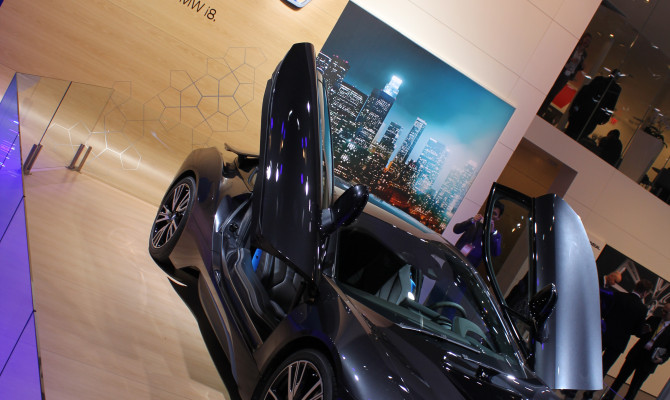
BMW i8: A supercar in eco-clothing. The i8 is a hybrid electric car set for launch this summer.
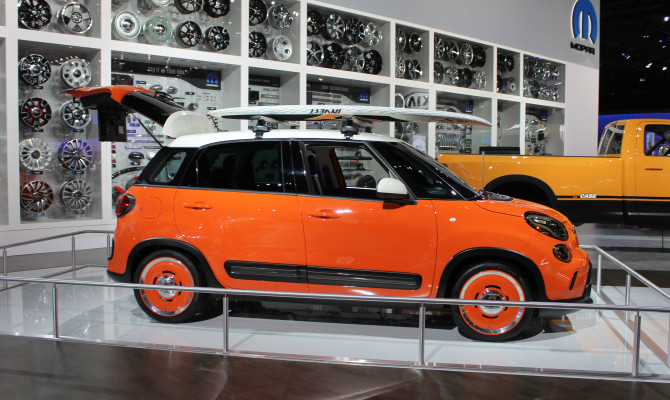
Fiat L: This Fiat L crossover, based on the popular 500, is ready for the beach.
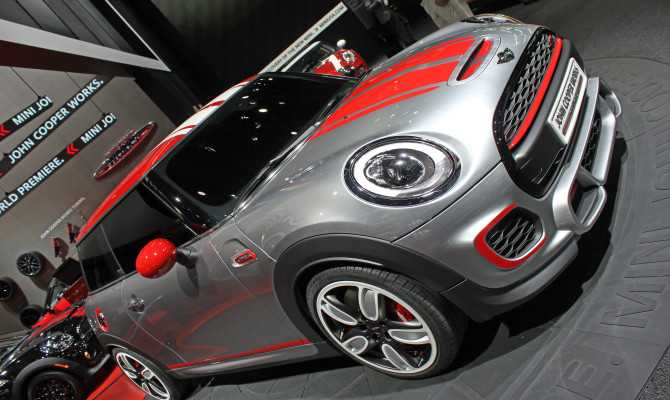
John Cooper Works MINI: Yet another iteration of the BMW-produced sub brand. This souped-up version of the new MINI will make it to the production line.
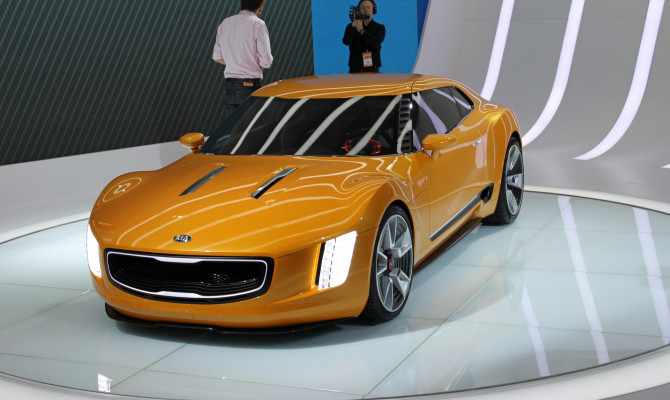
KIA GT4 Stinger: It’s a 2+2, rear-drive coupe with a detuned version of the 2.0-litre, turbocharged four-cylinder. No plans for production, says KIA. Nobody believes that!
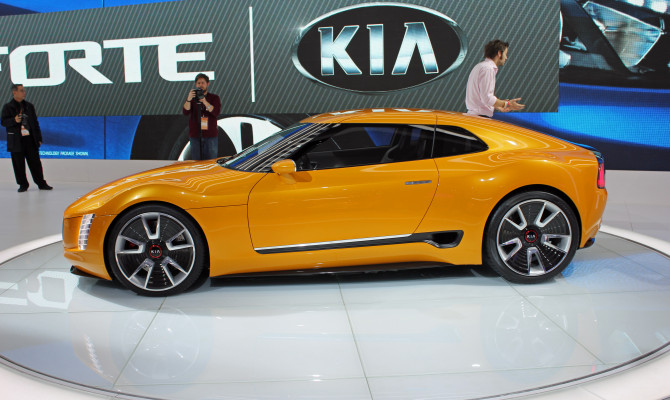
KIA GT4 Stinger: It’s a 2+2, rear-drive coupe with a detuned version of the 2.0-litre, turbocharged four-cylinder. No plans for production, says KIA. Nobody believes that!
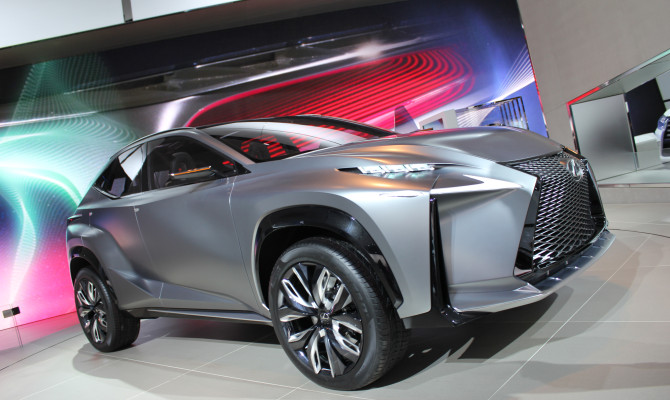
Lexus LF-NX: This concept previews the look of the next small SUV from Lexus.
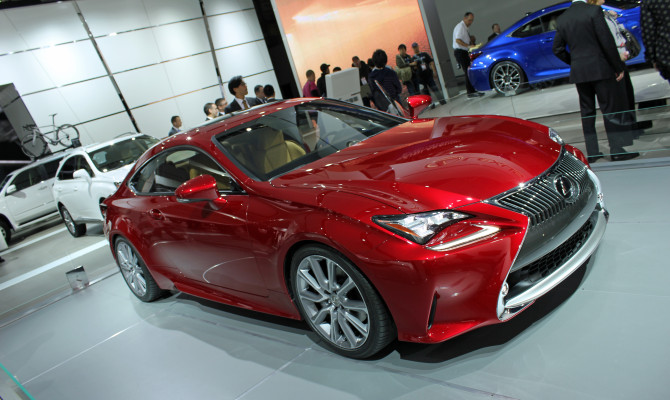
Lexus RC 350: A 3.5-litre, 450-plus horsepower V6 engine will power the RC350.
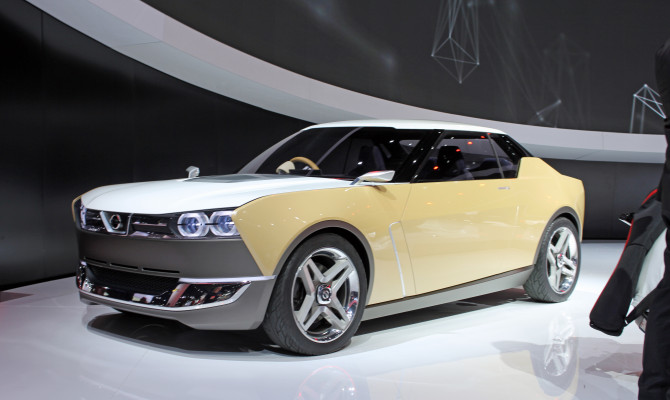
Nissan IDx: This rear-wheel-drive IDx concept, which resembles the olf 510, will likely go into production in 2016.
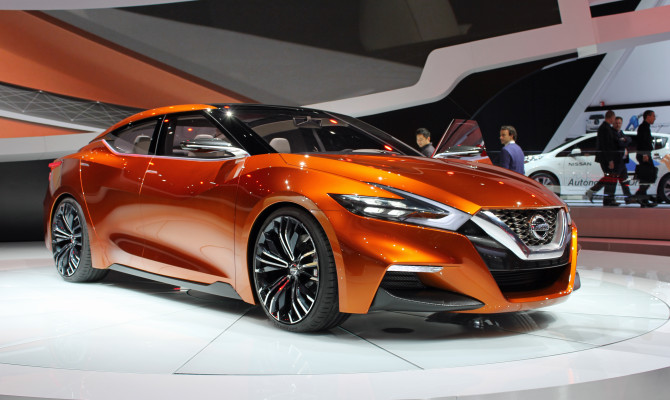
Nissan Sport sedan concept: A new design direction for Nissan, offered just before the new Maxima is revealed.
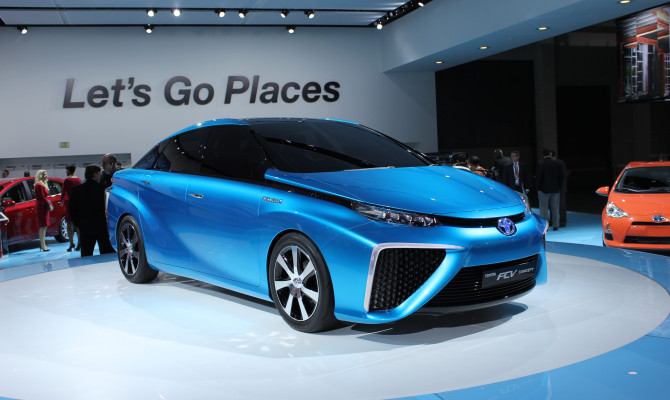
Toyota FCV: A hydrogen fuel cell powered car, expected in late 2015.
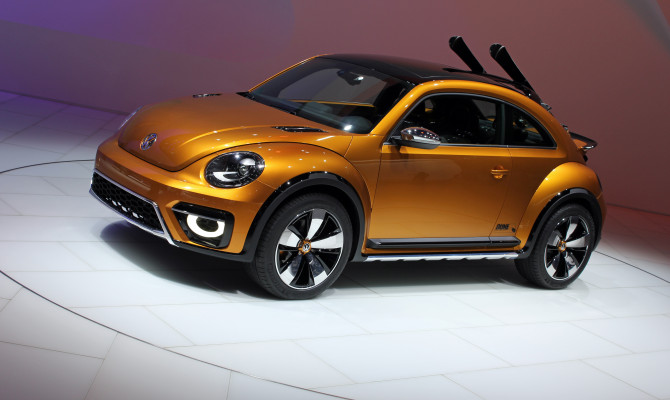
Volkswagen Dune concept: A dune buggy version of the popular VW Beetle.
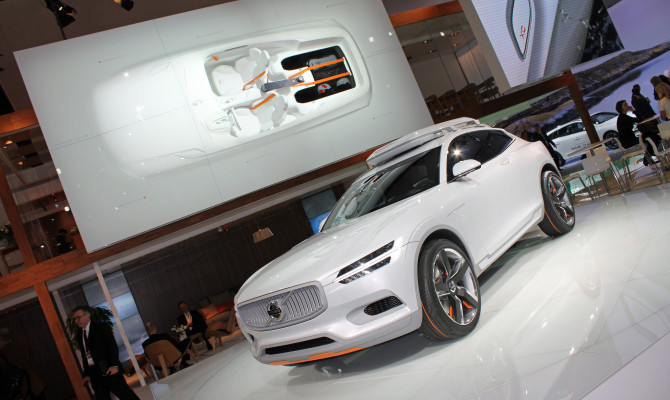
Volvo XC Coupe concept: This crossover from Volvo may just see the light of day.
Recent Comments
- { Enjoyed your Forest of Bowland in the BMW X5M, particularly the photo of the BMW in front of the main part of Stonyhurst College where... }
- { Bantam designed the Jeep, not Willy's or Ford. The American military gave the original Bantam prototype to Willys and Ford to copy. There is plenty... }
- { All Escalades come with a 6.2-lilter V8 engine that produces 420 horsepower. A six-speed automatic is the only transmission offered and drives the rear wheels.... }
- { Alexandra is an excellent journalist. }
Popular Posts
- Journey to a ‘Sparkling’ Luxury Okanagan Resort “Four lucky readers will put a Dodge Journey’s weekend-...
- The Need For Speed: Hike Those Highway Limits More than half of those polled believe the province sho...
- Drives-U-Crazy… Erratic drivers. An early morning drive from Kelowna to Vancouver is nor...
- Readers Respond: The Pros and Cons of Increasing B.C. Speed Limits Increasing the speed limits will only increase risk to...
- Honda CR-V Review: The Compact Crossover To Get Things Done The CRV is a very stylish and aerodynamic crossover veh...


